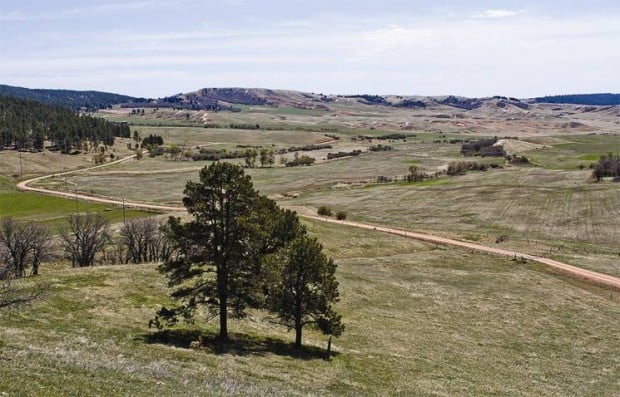The Sundance Times' Sarah Pridgeon tells readers:
Rare Element Resources has initiated a land exchange that, if approved by the Board of Land Commissioners, will allow the company to acquire 640 surface and mineral acres of State Trust Land near Warren Peak, adjacent to the planned Bull Hill Rare Earth Mine. In exchange, the State of Wyoming will acquire 400 acres of additional land in the Little Grand Canyon area, says Lisa Reinhart, Office of State Lands and Investments. The exchange will aid RER in its development of the Bull Hill Rare Earth Mine, allowing waste rock and low grade material to be stored after extraction from the Forest Service land upon which the mine will sit. The detailed analysis is now available for public review on the website at lands.state.wy.us and the comment period is open until March 15, while the final Board consideration date is anticipated for April 11.
AP Photo/Gillette News Record, Steve Remich from Rapid City Journal
The industry's rooters have been saturating the media with propaganda ahead of Congressional review of the Hardrock Mining and Reclamation Act. Comes this from Bloomberg's Jim Snyder:
"It's astounding in this time of trillion-dollar deficits that we aren't looking more closely at revenue off of public lands," Sen. Tom Udall, D-N.M., said in an interview. "This would be a very good place to do it." Rep. Edward Markey, D-Mass., estimated the U.S. could generate about $3 billion over 10 years with a 12.5 percent royalty and other fees on hardrock mining. In his 2013 budget, President Obama included a royalty rate of 5 percent for new mining operations.

Update, toxic effects of mining rare earth minerals:
ReplyDelete"Scientists say under-regulated rare earths projects can produce wastewater and tailings ponds that leak acids, heavy metals and radioactive elements into groundwater, and they point out that market pressures for cheap and reliable rare earths may lead project managers to skimp on environmental protections."